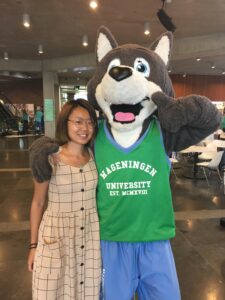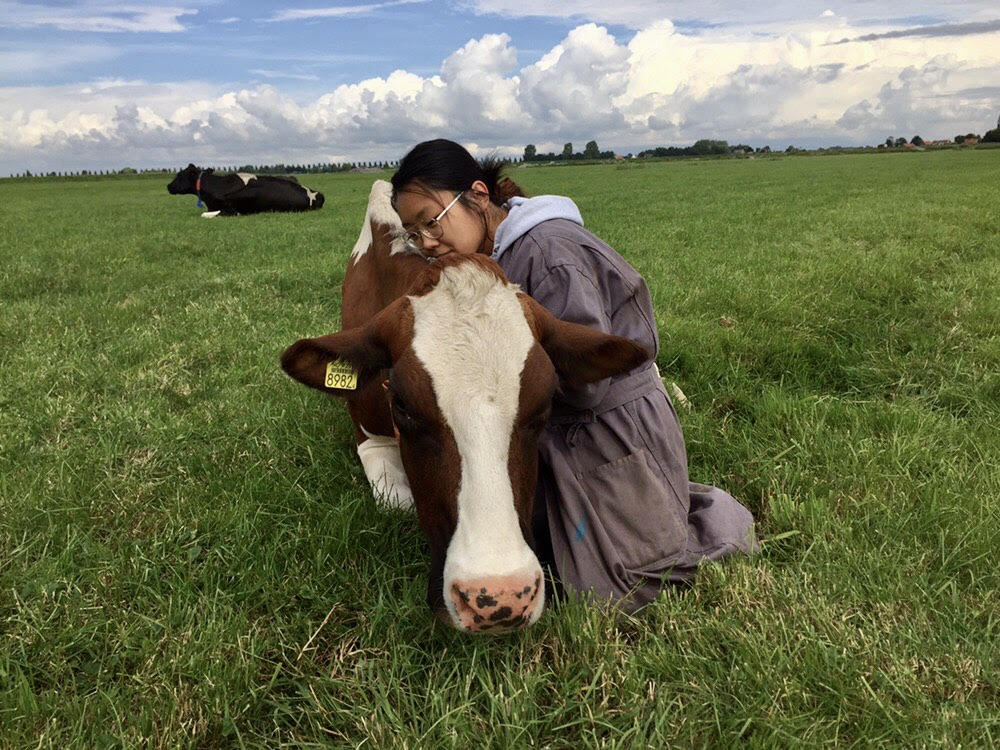For her thesis in Animal Breeding and Genetics, Xue used machine learning and deep learning algorithms to make quantitative and qualitative traits predictions of images of Gilthead Seabream. To do this, she fed 2300 images of the fish to the computer. ‘It is a relatively basic step in automatic phenotyping. The algorithm makes a connection between pixels and some phenotypes of the fish, likesize, shape and weight’
‘In traditional phenotyping, you cut the fish open to measure something’, says Xue. ‘By doing it with images and algorithms, you don’t have to harm the fish.’ The algorithm predicts how much the fish weighs and how lean it is. ‘Some seabreams have very round bellies, those are not good for breeding. You want leaner fish.’
Mistake?
Xue did not know that she was nominated for the prize. ‘I got an email that I won and thought: “they made a mistake! (Based on the times people misspell my name this could happen)” But I saw my supervisor in the cc. It turned out that other people had signed me up!’

The award comes with 2500 euros worth of prize money. ‘I’m not sure yet what to use it for. I just moved to a new house, maybe I will buy some furniture.’
Xue graduated in August 2019. Currently, she works at Livestock Research, where she focuses on video- and image analysis and big data for breeding in general. ‘This thesis is the start of my dream to combine advanced computer vision techniques with animal breeding and welfare, which I’m currently also working on. Winning this prize is really encouraging and I hope to see more people joining the team towards a smarter and more sustainable animal science.’
Researcher Animal Breeding and Genomics John Bastiaansen was Xue’s thesis supervisor. ‘What makes her work so special, is that in her work, Xue combines three different disciplines: machine learning; image analysis; and animal genetics. Her methods can be used to make more measurements about farmed fish while simultaneously disturb these fish less. Hence, it can benefit the wellbeing of the wish and improve the quality of data collection.’

 Yuanxu Xue with a cow. Photo: Yuanxu Xue
Yuanxu Xue with a cow. Photo: Yuanxu Xue